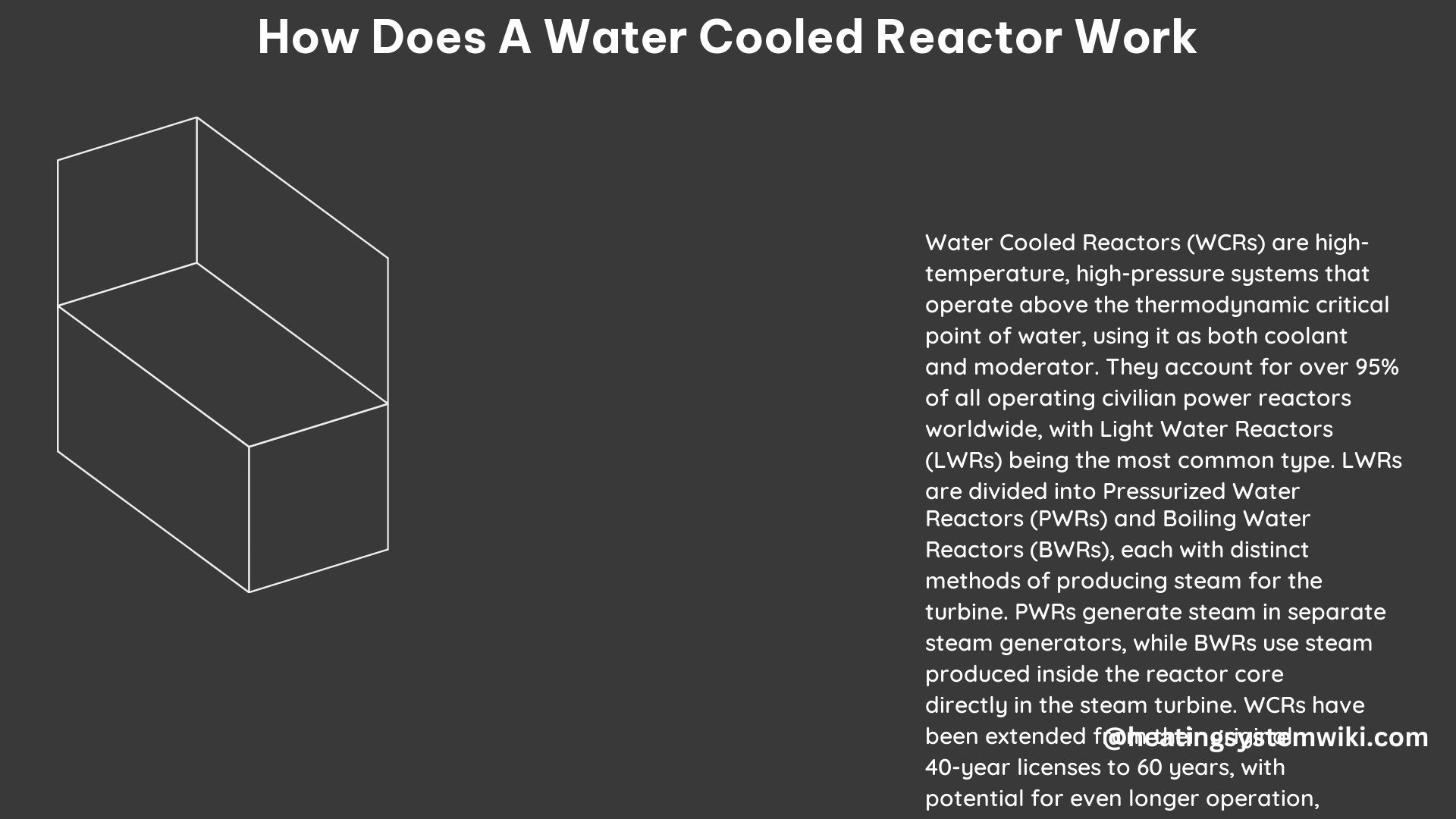A water-cooled reactor is a type of nuclear reactor that uses water as a coolant to remove heat from the reactor core. The water is circulated through the core, where it absorbs heat from the nuclear fuel, and then transferred to a heat exchanger, where the heat is used to produce steam. The steam is then used to drive a turbine, which generates electricity.
Pressurized Water Reactors (PWRs)
Pressurized water reactors (PWRs) are the most common type of water-cooled reactor. In a PWR, the water is kept under high pressure, typically around 15.5 MPa (2,250 psi), to prevent it from boiling as it absorbs heat from the reactor core. The heated water is then circulated through a series of tubes in a heat exchanger, where it transfers its heat to a separate loop of water, which turns into steam. The steam is then used to drive a turbine, which generates electricity.
Key Features of PWRs
- Coolant Pressure: The coolant water is kept under high pressure (typically around 15.5 MPa or 2,250 psi) to prevent it from boiling.
- Coolant Temperature: The coolant water enters the reactor core at around 290°C (554°F) and exits at around 325°C (617°F).
- Fuel: The fuel used in PWRs is typically enriched uranium dioxide (UO2) in the form of fuel pellets, which are sealed in metal fuel rods.
- Moderator: The coolant water also acts as the moderator, slowing down the neutrons to sustain the nuclear chain reaction.
- Power Output: Typical PWR power output ranges from 1 to 1.6 GWe (gigawatts of electricity).
Boiling Water Reactors (BWRs)

In a boiling water reactor (BWR), the water in the reactor core is allowed to boil, and the resulting steam is used directly to drive the turbine. The steam is then condensed and returned to the reactor core as feedwater.
Key Features of BWRs
- Coolant Pressure: The coolant water is kept at a lower pressure (typically around 7.2 MPa or 1,050 psi) compared to PWRs, allowing it to boil in the reactor core.
- Coolant Temperature: The coolant water enters the reactor core at around 278°C (532°F) and exits as steam at around 288°C (550°F).
- Fuel: The fuel used in BWRs is also typically enriched uranium dioxide (UO2) in the form of fuel pellets, sealed in metal fuel rods.
- Moderator: The coolant water also acts as the moderator in BWRs.
- Power Output: Typical BWR power output ranges from 0.6 to 1.5 GWe.
Advantages of Water-Cooled Reactors
- High Thermal Efficiency: Water-cooled reactors can operate at high temperatures and pressures, allowing them to achieve high thermal efficiencies, typically around 30-35%.
- Proven Technology: Water-cooled reactor designs have been in use for decades and have a well-established track record of safe and reliable operation.
- Compact Design: The use of water as a coolant and moderator allows for a relatively compact reactor design.
- Passive Safety Features: Newer water-cooled reactor designs incorporate passive safety features, such as gravity-driven cooling systems, to enhance safety and reduce the reliance on active safety systems.
Challenges and Limitations
- Containment Requirements: The high temperatures and pressures in water-cooled reactors require robust containment structures to prevent the release of radioactive materials in the event of an accident.
- Corrosion and Erosion: The high-temperature, high-pressure water environment can lead to corrosion and erosion of reactor components, requiring careful materials selection and maintenance.
- Spent Fuel Management: The management and disposal of spent nuclear fuel from water-cooled reactors is a significant challenge that requires careful planning and long-term storage solutions.
Conclusion
Water-cooled reactors, particularly PWRs and BWRs, are the most widely used type of nuclear reactor technology worldwide. Their ability to operate at high temperatures and pressures, coupled with their proven track record of safe and reliable operation, make them a key component of the global nuclear power industry. As the design of water-cooled reactors continues to evolve, with a focus on enhanced safety and efficiency, they are likely to remain a crucial part of the world’s energy mix for the foreseeable future.
Reference:
1. “Water Cooled Reactor – an overview” on ScienceDirect Topics
2. “Supercritical-Water-Cooled Reactor (SCWR)” on GIF Portal
3. “Water cooled nuclear reactors (WCR)” on IAEA
